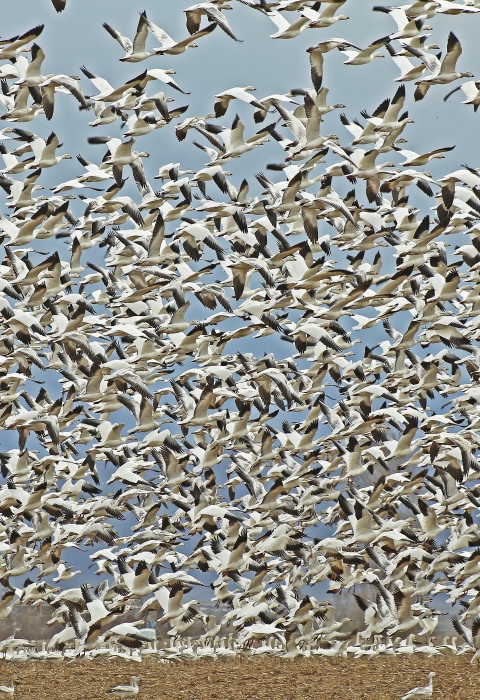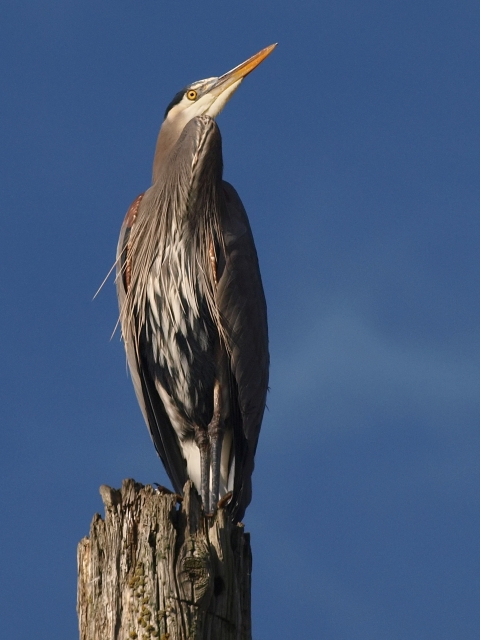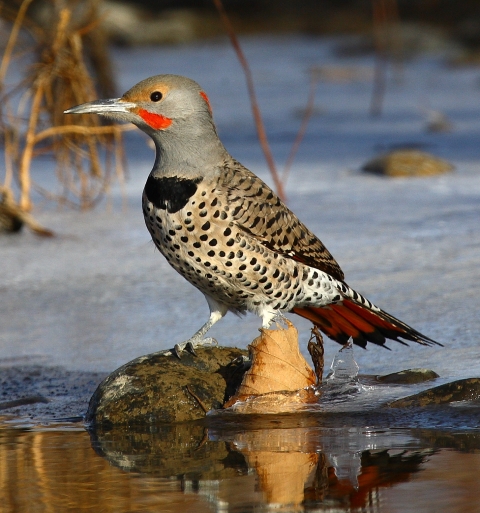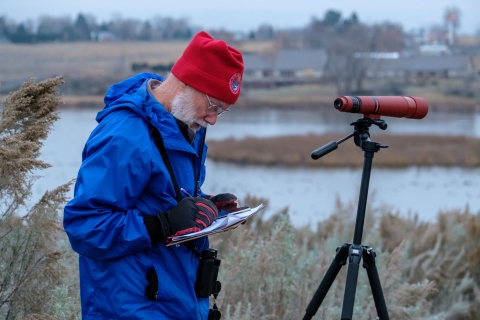

McNary National Wildlife Refuge is a welcomed respite for migratory birds, native plants and human visitors alike. The 15,000 acres of sloughs, ponds, streams and islands—riparian and wetland habitat—as well as upland shrub-steppe and cliff-talus habitat are important to migratory waterfowl, shorebirds and songbirds. Few areas in North America support such dense concentrations of waterfowl; more than half the mallards in the Pacific Flyway overwinter at some time in this portion of the Columbia River Basin.
Extending along the east bank of the Columbia River in southeastern Washington, from the confluence of the Snake River to the mouth of the Walla Walla River, and downstream into Oregon, McNary NWR is located around rural Burbank, but very close to the rapid development of the Tri-Cities (Kennewick, Pasco and Richland).
Hunting Lotteries OpenThe hunting lotteries are open.

There are a wide variety of opportunities and ways to experience McNary National Wildlife Refuge. Excellent opportunities to birdwatch, photograph wildlife, and to hunt and fish occur on all of management units.
Public use areas of the refuge are open daily during daylight hours (sunrise to sunset), except as modified by fishing and hunting regulations (see hunting specific regulations). The headquarters are open 8:00 a.m. to 4:00 p.m., Monday through Thursday, and 8:00 a.m. to 3:30 p.m. on Friday. The hours of operation for the Environmental Education Center are the same if staff and volunteers are available. Please phone ahead (509-546-8300) to avoid disappointment.

Established in 1956, McNary NWR was created to replace wildlife habitat lost to construction of the McNary Dam downstream. The 15,000 acres of sloughs, ponds, streams and islands— riparian riparian
Definition of riparian habitat or riparian areas.
Learn more about riparian and wetland habitat—as well as upland shrub-steppe and cliff-talus habitat are important to migratory waterfowl, shorebirds and songbirds. Few areas in North America support such dense concentrations of waterfowl; more than half the mallards in the Pacific Flyway overwinter at some time in this portion of the Columbia River Basin. In addition, McNary supports excellent populations of raptors, a host of mammal species, and as many reptiles and amphibians as can be found anywhere in the Columbia Basin.
The challenges faced by the FWS include artificial river operations, widespread nonnative invasive plant and animal species introduction, and extensive land use conversion and fragmentation. Refuge staff use a variety of carefully chosen habitat management techniques to maintain, recover, or enhance habitat for wildlife.
Management of seasonal wetlands involves the manipulation of water levels to encourage native food supplies and promote the diverse wetland plant growth that provides a variety of food and shelter for wildlife. Some wetlands are burned and disked to remove undesirable plant growth and create open areas. Shoreline burning and mowing also create open beach areas that waterfowl use for courting, feeding, resting and raising young. Seasonally flooded wetlands provide resting and feeding areas and are especially important to waterfowl during fall migration.

From its start in 1903, the National Wildlife Refuge System has owed its very existence to concerned citizens eager to protect America's natural resources. More than 200 nonprofit Refuge Friends organizations support national wildlife refuges, whether they work with a single refuge, a refuge complex or an entire state. Friends members are crucial to conserving and protecting our nation’s wildlife and teaching millions of Americans that their actions today determine the conservation legacy of tomorrow. More than 42,000 people volunteer their time and ideas each year to the U.S. Fish and Wildlife Service. Whether they work on the land, in a visitor center or with youth, they contribute to the conservation mission that reaches back more than a century. Become a volunteer or Refuge Friend to contribute your strength on behalf of America’s natural resources.